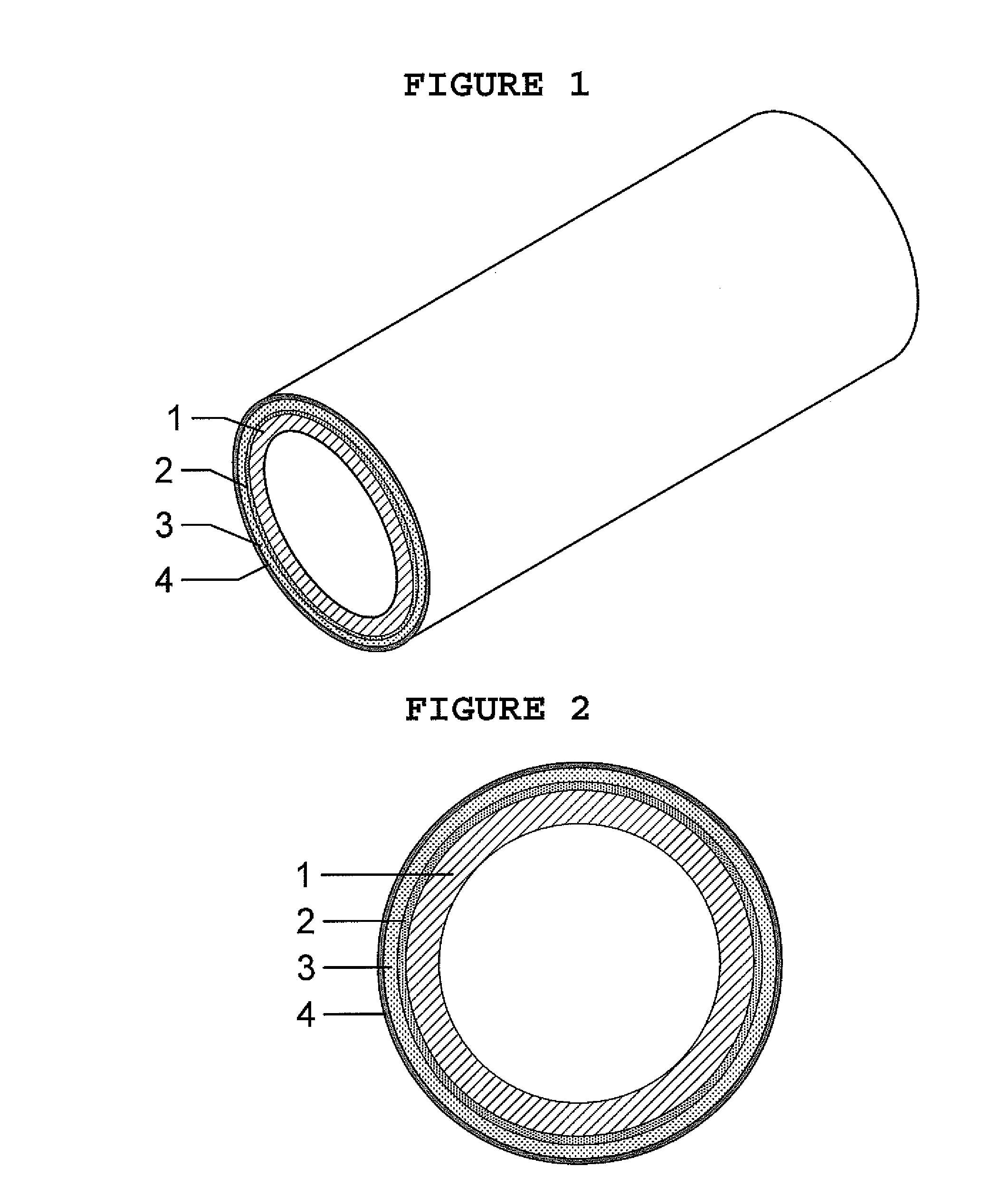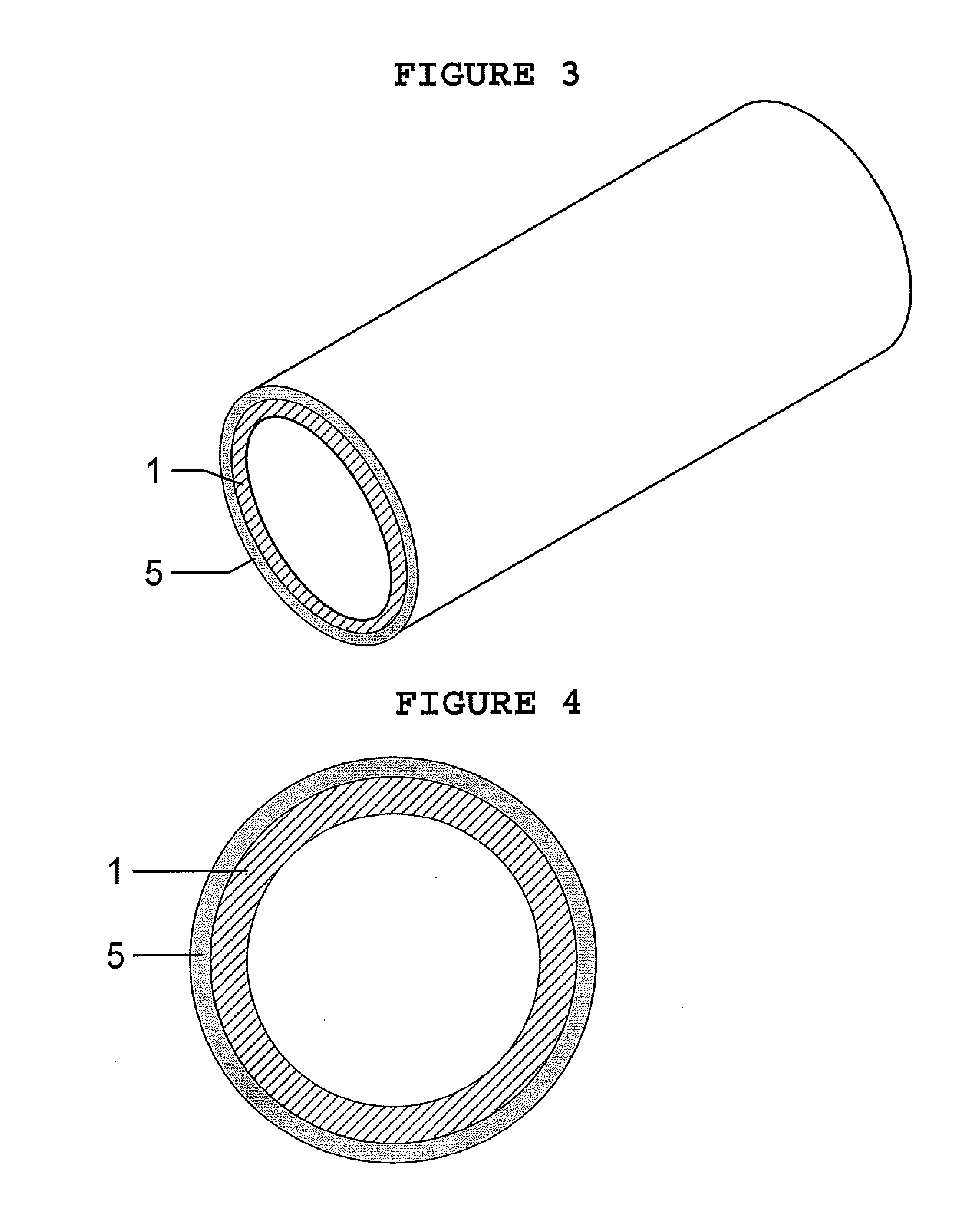Method of manufacturing rotogravure cylinders
a technology of rotogravure cylinder and aluminum base, which is applied in the direction of superimposed coating process, liquid/solution decomposition chemical coating, lithography, etc., can solve the problems of limited use of aluminum for the base of the cylinder, less difficulty in electro-copper plate, etc., to achieve the effect of improving the reliability of the cylinder, reducing the cost of production, and improving the quality of production
- Summary
- Abstract
- Description
- Claims
- Application Information
AI Technical Summary
Benefits of technology
Problems solved by technology
Method used
Image
Examples
example 1
[0042]A gravure cylinder with a conventional steel base was produced to the desired dimensions. The steel cylinder was provided with a coating layer, for instance based on electroplated copper. Brass particles, with an average diameter of less than 50 μm, preferably in the range of 40-45 μm, were sprayed with a thermal spraying method. The brass in use was for instance common brass or high brass, containing 35-40 wt % zinc. During the spraying process, the cylinder was rotated. Impact of the brass particles onto the cylinder resulted in in heating up of the particles, to the extent of at least partial melting. This melting resulted in formation of a single layer extending circumferential around the base. Compressive stress developed in the course of cooling down. This cooling down was achieved by waiting in one embodiment; in an alternative embodiment, jetted air was sprayed onto the cylinder with the circumferential layer.
[0043]The engraving layer was deposited in a thickness of ap...
example 2
[0045]A second gravure cylinder was produced on the basis of a cylinder with an aluminium base. This aluminium base was produced from an aluminum tube to the desired dimensions. The brass particles of the type used in Example 1 were sprayed onto the aluminum base directly by means of high-velocity thermal spraying, in which the particle speed was generally above 300 m / s, typically in the order of 700-1,200 m / s. The thickness of the deposited engraving layer was again set to 400 μm, which was subsequently thinned and polished.
example 3
[0046]The rotogravure cylinder manufactured in accordance with Example 1 was tested. Use was made of Vickers Hardness testing. This testing, standardized per se under ASTM E92 and ISO6507 was measured with the ultrasonic contact impedance (UCI) measurement, standardized under ASTM A 1038, using a diamond pyramid with a 136° roof angle. Measurement equipment for testing the Vickers Hardness on a surface with UCI measurement is commercially available from various suppliers. The Vickers Hardness is tested at room temperature, i.e. 20-25° C. The resulting Vickers Hardness was 430 HV.
[0047]Although the above description is the recommended methodology for the manufacturing of a light weight gravure cylinder with a base made of aluminum and a circumferential single layer engraved appropriately, it is apparent that appropriate deviations or alterations or modifications can be implemented without significant deviations from the present invention.
[0048]In summary, the invention relates to a g...
PUM
| Property | Measurement | Unit |
|---|---|---|
| Vickers Hardness | aaaaa | aaaaa |
| Vickers Hardness | aaaaa | aaaaa |
| surface roughness Rz | aaaaa | aaaaa |
Abstract
Description
Claims
Application Information
 Login to view more
Login to view more - R&D Engineer
- R&D Manager
- IP Professional
- Industry Leading Data Capabilities
- Powerful AI technology
- Patent DNA Extraction
Browse by: Latest US Patents, China's latest patents, Technical Efficacy Thesaurus, Application Domain, Technology Topic.
© 2024 PatSnap. All rights reserved.Legal|Privacy policy|Modern Slavery Act Transparency Statement|Sitemap



